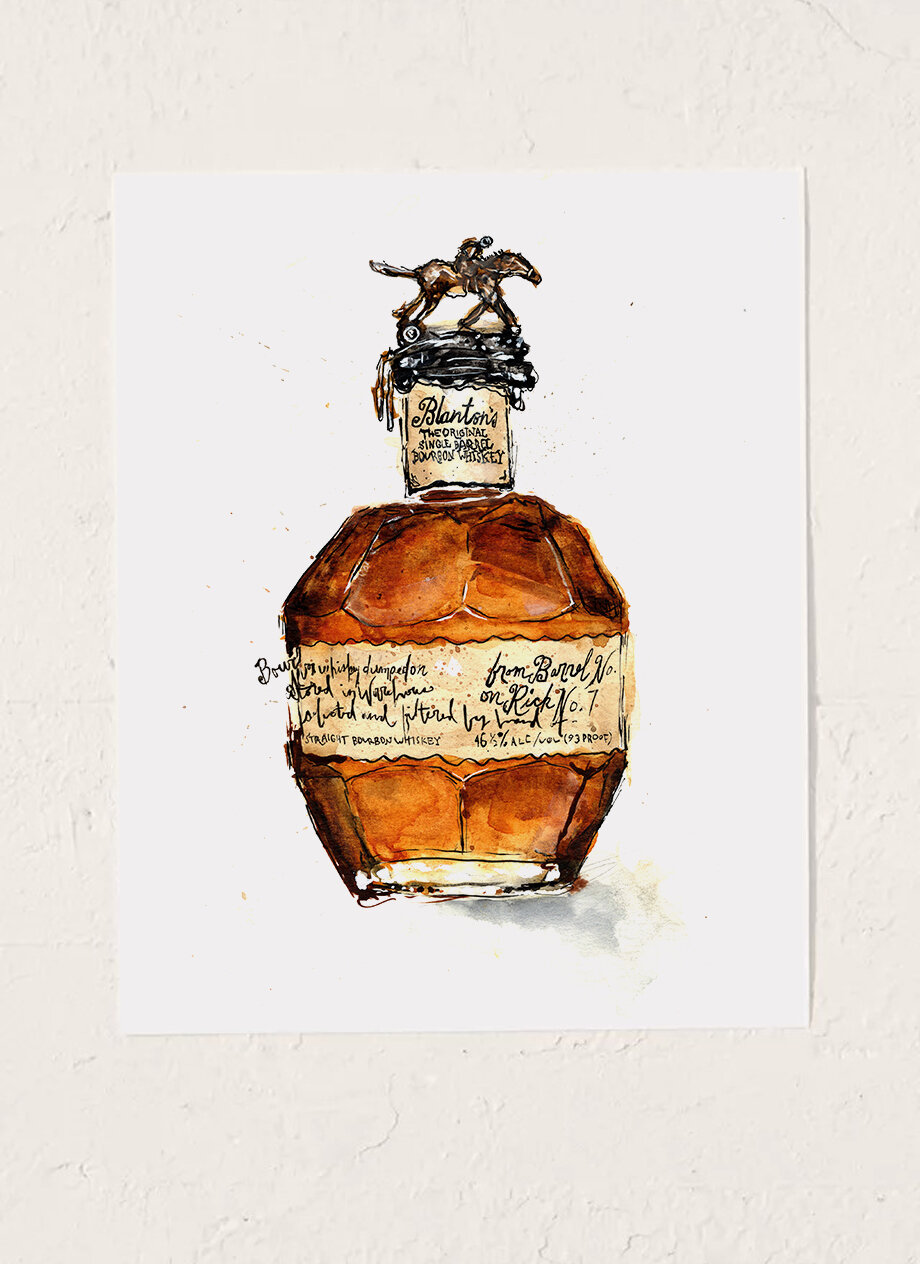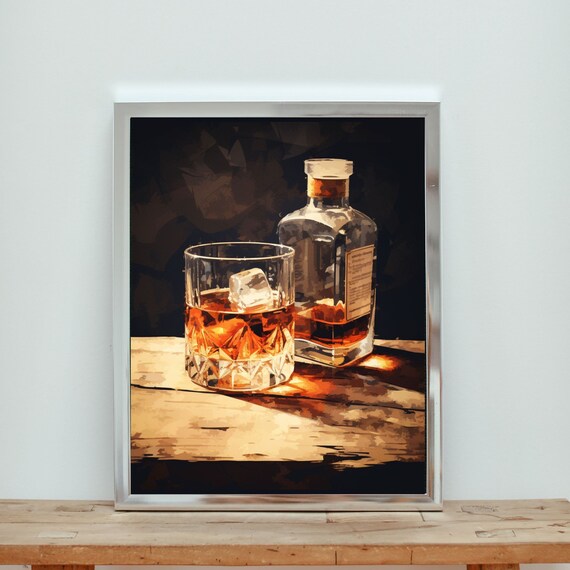The Importance of Whiskey Art in Celebrating Heritage and Craftsmanship in the Beverage Sector
The complex connection in between whiskey art and the event of heritage and craftsmanship within the drink sector can not be overstated. Through thoughtfully made tags and containers, scotch brand names encapsulate their historical origins and the artisanal abilities that specify their manufacturing methods.
The Historic Roots of Whiskey
At the heart of scotch's appeal lies a rich tapestry of historical roots that trace back to ancient human beings. The origins of scotch can be linked to the purification techniques of the Sumerians and Babylonians around 2000 BCE, where very early types of fermented grain drinks started to arise. Nevertheless, it was in the Middle Ages that the art of purification developed considerably, specifically in Ireland and Scotland, bring about the development of bourbon as we understand it today.
The term "scotch" itself derives from the Gaelic word "uisce beatha," indicating "water of life." This expression highlights the cultural significance of whiskey in Celtic societies, where it was usually associated with rituals, events, and public bonding. By the 15th century, distillation ended up being an acknowledged craft within monastic areas, leading the method for the facility of lawful distilleries.
As trade routes increased, bourbon's appeal grew, transcending local boundaries and catching the rate of interest of connoisseurs worldwide. Limited Edition. This historical trip reflects not just the craftsmanship behind whiskey production yet likewise its indispensable function in cultural and social contexts, marking it as a considerable beverage throughout history
Artistic Expression in Branding
Scotch branding stands as a compelling crossway of virtuosity and commerce, where visual identification plays a crucial role fit consumer understanding. The aesthetics of whiskey tags, product packaging, and marketing materials mirror not just the brand name's story however likewise its core values and heritage. With artistic expression, distilleries communicate a story that reverberates with customers, stimulating feelings and stimulating connections.
Making use of shade, typography, and imagery in branding serves to distinguish items in a saturated market. Traditional motifs may stimulate a sense of authenticity and craftsmanship, while contemporary styles can signify advancement and forward-thinking. This strategic creative direction boosts brand name acknowledgment and commitment, allowing consumers to build an individual partnership with the bourbon they select.
Additionally, imaginative expression in branding often functions as a celebration of regional heritage. Distilleries frequently integrate regional signs or historic recommendations into their styles, developing a local color that welcomes customers to engage in a more comprehensive social experience. Inevitably, the creativity behind bourbon branding not just enhances aesthetic allure however likewise enhances the overall narrative of the brand name, promoting a much deeper admiration for the workmanship and heritage embedded in each bottle.
Craftsmanship in Bottle Style
The artistry apparent in scotch branding prolongs past aesthetic identification to incorporate the workmanship entailed in container layout. Each container acts as a vessel not simply for the spirit within, yet additionally for the tale it outlines its beginning, top quality, and custom. The style process requires meticulous focus to information, as components such as shape, closure, and material add significantly to the total perception of the bourbon.
Craftsmanship in bottle layout entails choosing top notch glass that can improve the whiskey's shade and you could try this out clearness, while also providing a responsive experience for the consumer. The shape of the container should be both functional and cosmetically attractive, usually showing the heritage of the brand. Several distilleries choose distinct forms or embossed logo designs that evoke a feeling of authenticity and history.
Moreover, the tag design and typography play an essential duty in interacting the brand name's narrative. Bourbon Art. A well-crafted container not only captivates the customer's eye but likewise reinforces the brand name's dedication to high quality and practice. In this method, the workmanship of learn the facts here now bottle layout becomes a vital element of the whiskey experience, merging virtuosity with a profound regard for heritage
Social Importance of Bourbon Art
Commemorating custom and craftsmanship, the cultural value of scotch art transcends plain appearances, intertwining with the social and historical stories of the regions from which it originates. Each bottle serves as a canvas, showing the distinct stories, mythology, and traditions that have actually shaped local whiskey-making methods. The elaborate layouts frequently reflect the heritage of the distillers, incorporating symbols and motifs that resonate with the society and values of their neighborhoods.
On top of that, scotch art plays an essential function in common celebrations and events, working as a tangible web link in between people and their shared experiences. By appreciating the virtuosity in whiskey packaging, customers grow a deeper understanding and respect for the craft, eventually improving their enjoyment of the drink itself.
Modern Trends in Whiskey Presentation
Over the last few years, the discussion of whiskey has progressed to mirror contemporary tastes and patterns while still recognizing traditional workmanship - Realism Art. Distilleries are increasingly concentrating on aesthetic aspects that boost the total drinking experience, bridging the gap between heritage and modernity
Ingenious container layouts have actually arised, frequently integrating sustainable materials and creative labels that tell compelling stories. Lots of brand names currently work together with regional musicians, instilling their products with special aesthetic expressions that reverberate with customers. Furthermore, limited-edition releases are commonly packaged in collectible containers, including value and appeal for lovers.

Verdict
In conclusion, scotch art acts as an essential avenue for expressing the heritage and craftsmanship intrinsic in the drink market. Via detailed branding, innovative bottle designs, and culturally significant artistic elements, whiskey brands successfully recognize their practices and get in touch with customers. This creative narrative not just boosts the recognition of bourbon however likewise reinforces community identification and pride amongst manufacturers. Eventually, bourbon art plays an essential function in preserving and commemorating the rich cultural tapestry of whiskey-making.


Craftsmanship in container design includes picking premium glass that can boost the bourbon's color and clarity, while also supplying a responsive experience for the customer. In this way, the craftsmanship of bottle style comes to be a vital facet of the bourbon experience, merging creativity with a profound regard for heritage.
In conclusion, whiskey art serves as an important conduit for expressing the heritage and workmanship inherent in the drink sector.